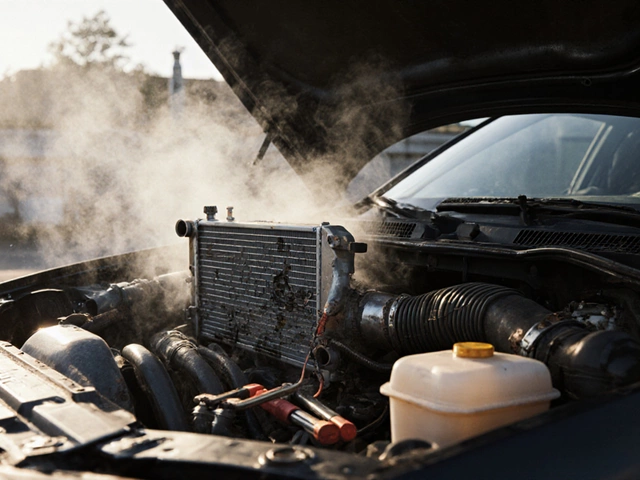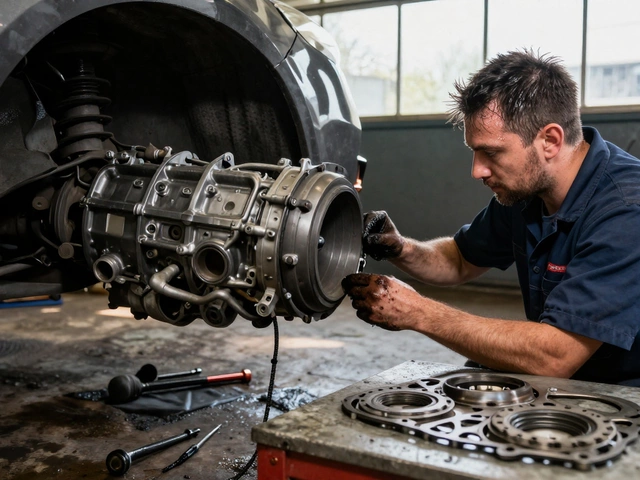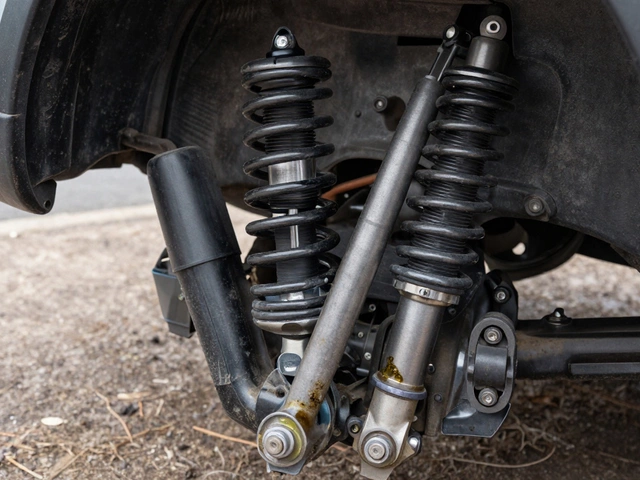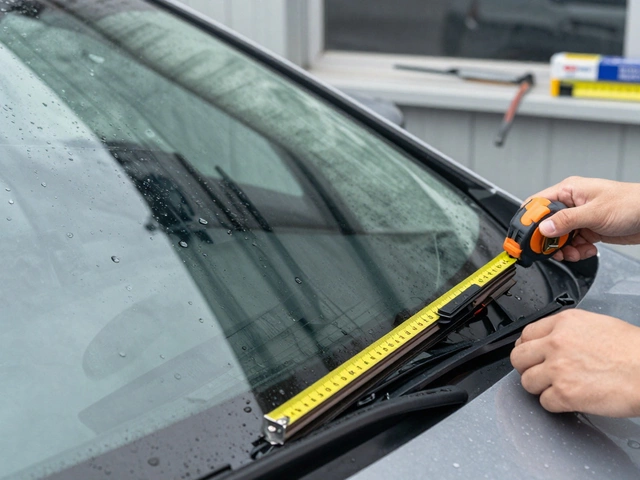Exhaust Sound Depth Calculator
Ever sit behind the wheel and wish your car could roar like a classic muscle, instead of humming politely? A deep sounding exhaust isn’t just about bragging rights; it can make the driving experience feel more connected and even improve perceived performance. Below you’ll find a step‑by‑step roadmap, practical tips, and the legal backdrop you need to turn that growl into reality.
Key Takeaways
- Choose the right combination of muffler, resonator, and pipe diameter for genuine depth.
- Cat‑back upgrades deliver the biggest sound jump without breaking the bank.
- Professional installation and proper tuning keep the note loud yet compliant.
- Regular maintenance prevents rattles and keeps the tone consistent.
- Know your local decibel limits to avoid costly fines.
What Makes an Exhaust Sound Deep?
At its core, an Exhaust System is a network of pipes, chambers, and valves that moves combustion gases away from the engine while shaping the acoustic signature of the vehicle. The tone you hear depends on three main factors:
- Frequency range: Lower frequencies (around 80‑200Hz) give that deep rumble, while higher frequencies sound sharp.
- Resonance: Chambers like the Muffler add tuned cavities that dampen or amplify certain frequencies.
- Flow dynamics: Pipe diameter and bends affect exhaust gas velocity, which in turn influences sound pressure.
Understanding these mechanics helps you pick modifications that target the low‑end growl rather than just louder noise.
Core Components that Shape the Tone
Each part of the system contributes its own acoustic personality.
- Resonator is a chamber designed to cancel out specific sound frequencies, often making the exhaust quieter and smoother. Removing or swapping it for a straight‑through version can unleash deeper tones.
- Cat‑back Exhaust refers to the portion of the system that runs from the catalytic converter to the tailpipe, including muffler, resonator, and piping. Upgrading this segment changes the overall acoustic profile.
- Headers are exhaust manifolds that collect gases from each cylinder and feed them into the downpipe. Performance headers often have equal‑length tubes that improve scavenging and add a throaty note.
- Exhaust Tip is the visible end of the pipe, available in various shapes and diameters that can subtly affect sound projection.
- Engine produces the exhaust gases; its firing order, compression ratio, and torque curve dictate the baseline frequency range.
- Decibel measures sound pressure level; most municipalities cap street‑legal exhausts at 80‑95dB SPL.
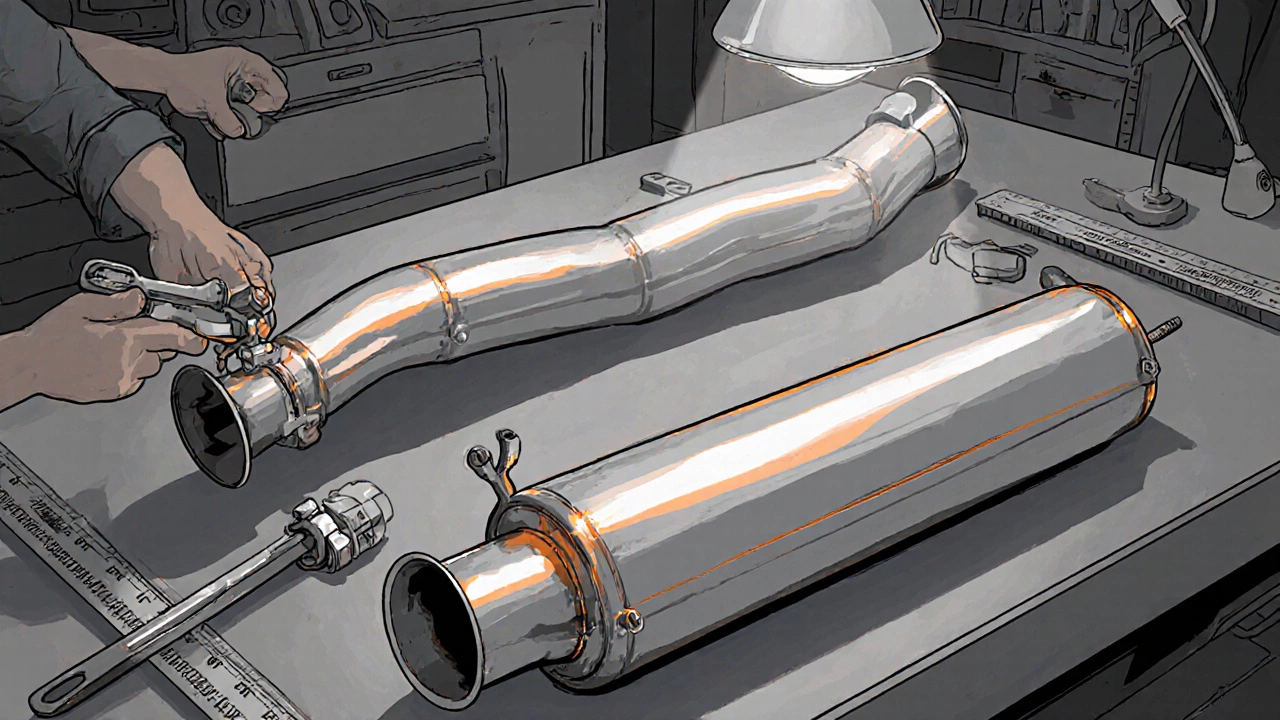
Popular Mods for a Deeper Note
Below is a practical checklist. Pick the steps that match your budget, skill level, and local laws.
- Swap to a performance muffler. Look for chambered or dual‑wall designs that emphasize low‑frequency resonance. Brands like Borla, Flowmaster, and Magnaflow have “deep‑tone” series.
- Upgrade to a cat‑back system. This replaces stock piping, muffler, and often the resonator with larger‑diameter, mandrel‑bent tubes that flow more freely and amplify the engine’s natural rumble.
- Remove or replace the resonator. A resonator delete (straight pipe) eliminates mid‑range cancellation, allowing more bass to come through. If full delete is illegal, consider a high‑flow resonator that still lets low tones pass.
- Fit larger‑diameter piping. Moving from 2.25" to 2.5" or 3" reduces back‑pressure, which can make the exhaust note sound fuller. Beware of too‑big a pipe on small engines-it may reduce low‑end torque.
- Install mandrel‑bent tubing. Unlike crush‑bent pipes, mandrel bends keep the interior cross‑section constant, preserving flow and preventing turbulence that muddies sound.
- Choose an aggressive exhaust tip. Flared or double‑wall tips can project sound outward, making the note feel louder without increasing actual dB.
- Consider header upgrades. Equal‑length stainless‑steel headers promote a more even exhaust pulse, deepening the rhythm of the roar.
Comparison of Common Deep‑Tone Upgrades
| Upgrade | Typical Cost (USD) | Power Gain | Sound Depth | Legal Status (US) |
|---|---|---|---|---|
| Performance Muffler | $150‑$300 | 0‑5hp | Medium‑Low | Legal if within dB limit |
| Cat‑back System | $300‑$800 | 5‑15hp | High | Legal in most states; check dB |
| Resonator Delete | $50‑$150 | 2‑8hp | Very High (bass) | Often illegal in noise‑restricted zones |
| Larger‑Diameter Pipe | $100‑$250 | 3‑10hp | Medium‑High | Legal if dB OK |
| Mandrel‑Bend Kit | $200‑$400 | 4‑12hp | Medium | Legal |
| Aggressive Exhaust Tip | $30‑$120 | 0hp | Low‑Medium (projected) | Legal |
| Performance Headers | $400‑$1,200 | 10‑30hp | High (pulse) | Legal, but may affect emissions |
Installation Tips & Common Pitfalls
Even the best parts won’t deliver a deep note if they’re installed wrong. Follow these practical pointers:
- Fit before you commit. Many aftermarket mufflers and pipes come with slip‑on flanges. Temporarily mount them to test sound before welding.
- Use proper gaskets. A cheap rubber gasket can leak exhaust gases, causing rattles that mask the deep tone you’re after.
- Tighten to spec. Over‑tightening clamps can crush mandrel‑bent sections, creating turbulence and unwanted whine.
- Check for clearance. Larger pipes may scrape the under‑carriage or hit the suspension. Verify clearance on a raised car and adjust as needed.
- Consider professional welding. A weak weld can fail under heat cycles, leading to metal fatigue and noisy leaks.
- Don’t forget the catalytic converter. In many states, removing the cat is illegal; a cat‑back system leaves it untouched while still offering a deeper sound.

Legal & Noise Regulations
Deep sounds are great, but you don’t want a ticket. Here’s a quick legal cheat‑sheet:
- Decibel limits. Most US states cap street‑legal exhausts at 80‑95dB SPL measured 12 inches from the tailpipe. Use a handheld SPL meter to confirm.
- Emissions compliance. Any modification that alters the catalytic converter or adds a “straight‑pipe” may violate EPA standards.
- State‑specific rules. California’s CARB regulations are the strictest; a resonator delete is virtually always illegal there.
- Inspections. If your state requires annual vehicle inspections, bring documentation of the parts and certify they meet noise thresholds.
When in doubt, check your local DMV or transportation department website for the exact dB limit.
Maintenance to Keep the Growl Consistent
After you’ve invested in parts, regular upkeep ensures the tone stays deep and not ragged.
- Inspect for rust. Corrosion inside the pipe can create turbulence, dulling the bass.
- Replace gaskets annually. Heat cycles degrade them, leading to leaks that add high‑pitched whine.
- Clean the muffler. Over time, soot can build up and affect resonance; a gentle pressure wash works well.
- Listen for loose brackets. Vibration can loosen mounting hardware, creating rattles that mask the deep tone.
- Re‑tune the ECU. If you’ve significantly reduced back‑pressure, a modest fuel‑map adjustment can sharpen the low‑end response.
Frequently Asked Questions
Will a deeper exhaust make my car faster?
A deeper note often comes with reduced back‑pressure, which can free up a few horsepower, especially on low‑rev engines. However, the primary goal is sound, not performance. Pairing an exhaust upgrade with a proper tune maximizes any power gain.
Is a resonator delete legal in most states?
Generally no. Many states enforce noise limits that a resonator delete exceeds. Some states allow it if the resulting dB stays below the limit, but it’s risky. Always measure after the change and consult local regulations.
How much does a cat‑back system cost?
Prices vary widely. Entry‑level stainless‑steel kits start around $300, while premium carbon‑fiber or titanium options can exceed $1,200. Installation labor adds another $150‑$300 if you don’t DIY.
Do I need a new muffler if I install larger pipes?
Not always, but a larger‑diameter muffler helps maintain the flow balance. Keeping the muffler’s internal volume proportionate to the pipe size preserves low‑frequency resonance.
Can I measure my exhaust’s decibel level at home?
Yes. A handheld SPL meter (often sold as a “noise level meter”) placed about 12 inches from the tailpipe while the engine is at idle or 3,000rpm will give a reliable reading. Note ambient noise can affect accuracy.

